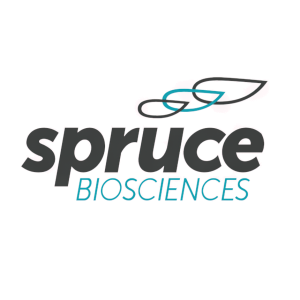Spruce Biosciences Presents Phase 2 Data for Tildacerfont in Adults with Congenital Adrenal Hyperplasia at 23rd European Congress of Endocrinology
Spruce Biosciences, Inc. (Nasdaq: SPRB), a late-stage biopharmaceutical company focused on developing and commercializing novel therapies for rare endocrine disorders with significant unmet medical need, today presented data from its Phase 2 clinical trial of tildacerfont in adults with classic congenital adrenal hyperplasia (CAH) at the European Society of Endocrinology’s 23rd European Congress of Endocrinology (ECE 2021), taking place virtually May 22 – 26, 2021.
SPR001-202 was an open-label, 12-week Phase 2a clinical trial, which assessed the ability of a daily dose of 400mg of tildacerfont to lower disease-driving hormones such as adrenocorticotropic hormone (ACTH), 17-hydroxyprogesterone (17-OHP), and androstenedione (A4) over a 12-week dosing period. These hormones are used by physicians as a means of measuring the severity of CAH. Patients were classified into two groups based on disease control using these baseline hormone levels, defined as either poor disease control or good disease control.
Patients with poor disease control upon study entry had mean baseline levels of ACTH, 17-OHP and A4 that were significantly above the upper limit of normal. Administration of tildacerfont to these patients resulted in mean maximum reductions of
“It is encouraging to see that tildacerfont, an oral, once-daily, and non-steroidal investigational therapy, produced meaningful reductions in highly elevated hormone levels for classic CAH patients, including, in some cases, normalization of these hormone levels over twelve weeks,” said Richard Auchus, MD, PhD, the study’s lead investigator and Professor of Internal Medicine and Pharmacology, University of Michigan, Ann Arbor. “The data suggest that tildacerfont has the potential to improve the adverse consequences of androgen excess and to reduce the burden of daily glucocorticoid dosing for these patients. Patients with classic CAH should benefit from new treatment options, which effectively manage their disease, yet reduce the complications derived from chronic glucocorticoid exposure as the existing standard of care.”
Spruce’s CAHmelia program in adult classic CAH patients is underway and actively enrolling in sites within the United States and Europe. CAHmelia-203 is assessing the ability of tildacerfont to reduce excessive adrenal androgens in patients with poor disease control, while CAHmelia-204 is assessing the ability of tildacerfont to reduce glucocorticoid usage in patients with good disease control while maintaining control of androgens.
The presentation is on display in ECE 2021’s virtual poster hall. Learn more about the full program and how to access the poster presentation details on







